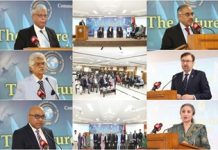Introduction
The Association of Southeast Asian Nations (ASEAN) was established on August 8, 1967, in Bangkok, Thailand, when the Foreign Ministers of Indonesia, Malaysia, The Philippines, Singapore, and Thailand signed the Bangkok Declaration. Other Southeast Asian countries, including Brunei Darussalam, Cambodia, Laos, Vietnam, and Myanmar, joined the bloc later in the years, making it a 10-member organization. Accepting Timor-Leste’s ASEAN admission application, it was granted observer status in November 2022. It will soon become the 11th member of the Organization.
ASEAN’s primary objective is to uphold and strengthen peace, security, and stability in the region. Over the years, ASEAN has made significant progress in these areas. It has not only effectively established, secured, and maintained peace and security in the region, but has also raised the living standards of its 661 million people and increased the combined GDP of the regional states to over US$ 3.3 trillion. ASEAN is now the fifth-largest economic power in the world.
Besides economic benefits, ASEAN has also brought political advantages to the region. Due to its political and strategic significance, ASEAN is made part of deliberations in most other major international events, including the G-7 and G-20. Similarly, world leaders attend ASEAN summits and other meetings to discuss global issues. Currently, 96 countries outside of ASEAN have accredited their ambassadors to ASEAN, 41 non-ASEAN countries have acceded to the Treaty of Amity and Cooperation (TAC) of ASEAN, and more than 20 countries have acquired or aspire to acquire dialogue or development partnerships with the Organization.















